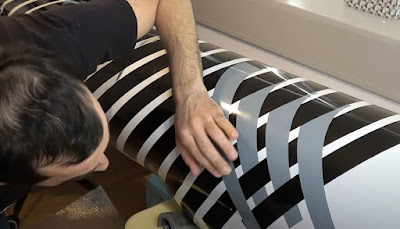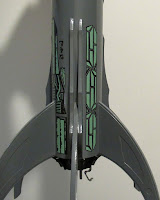Here's the smaller of the Quest Advanced Rocketry designs.
The Lil' GRUNT has a military vibe to it. Olive drab paint and some bullet hole hits.
The design style reminds me a little of the Estes Red Max. This one has three fins and streamer recovery.

The same nose cone is used throughout all the Enerjet models. The shoulder seems long at almost 2 3/4".
Fins are laser cut from stiff 1/8" thick balsa.
1/8" black elastic shock cord and a 36" long rip stop streamer.
The "decals" are peel and stick.
NOTE: The stickers are glossy but the body will be painted flat olive drab. I might try some some clear coat adjustments so the sticker sheen won't be so obvious against a flat finish.




















































